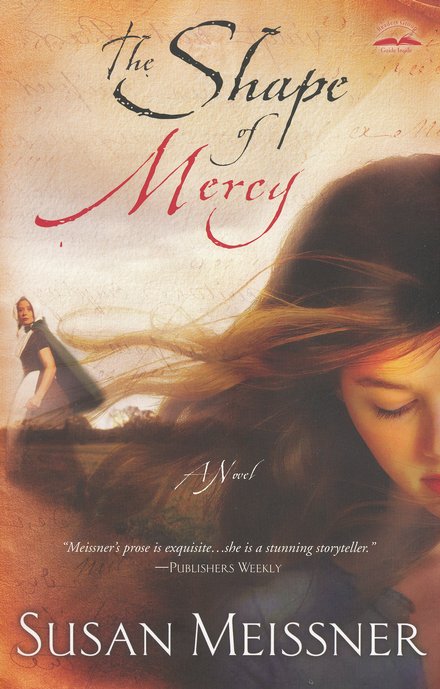 Susan Meissner is the author of ten novels, including The Shape of Mercy, named by Publishers Weekly as one of the Best Books of 2008. When she is not working on a new novel, she is directing the small groups ministries a The Church at Rancho Bernardo. She also enjoys teaching workshops on writing and dream-following, spending time with her family, music, reading great books, and traveling. She lives in southern California with her pastor husband and their four grown children. Visit Susan at her website: http://www.susanmeissner.com/index.html |
|
What a Girl WantsThe Nuts and Bolts of Women’s Fiction |
|
|
When you become a novelist, you enter a world of boxes. The moment you conceive an idea in your head for a work of fiction, you step inside a box. It’s not a bad thing, actually. The box you are in will allow you to pitch, write, and sell the book. Even if you write a book you consider “out of the box,” you have chosen an identifiable niche for your novel. It’s the unconventional, out-of-the-box niche. That is your box. Women’s fiction, a box that seems to have evolved out of other boxes, is my box—or, as male readers would say, is my wheelhouse. It’s where I feel at home. It’s where I believe I can pilot a ship that actually goes somewhere. Incidentally, I didn’t set out to hop into the women’s fiction box. My writing style revealed to me who my target audience was and that’s always a good thing: know whom you are writing for. But how do you define the writing box called women’s fiction? What distinguishes it from suspense or chick lit or romance? Is there crossover? Does women’s fiction address themes other genres do not? From my experience as a multi-published author of women’s fiction, I can give you my perspective on what makes a novel a decidedly female read. It’s a gray area, really. You usually don’t hear gals describe what they read as “women’s fiction,” and you won’t often find books shelved that way in Barnes & Noble. It’s more a label we writers use to describe what we write rather than what someone reads. My writing themes are heavily dependent on human relationships, especially those found in the family, and women readers are all about relationships. This is particularly true with my last two books, Blue Heart Blessed (Harvest House) and The Shape of Mercy (WaterBrook Press). Both books resonated heavily with female readers. Blue Heart Blessed is about a jilted bride who opens a used wedding-dress shop and tries valiantly to part with the dress of her dreams, all the while wondering what her father would do to help her heal if he were alive. In The Shape of Mercy, a wealthy female college student searching for purpose transcribes the ancient diary of a victim of the Salem Witch Trials and learns how to choose love over judgment. Publishers Weekly called The Shape of Mercy “achingly romantic,” which made me smile because the book is not categorized in the romance genre. But I managed to communicate the pull of romantic love, which is the deepest of all human relationships, into the story’s weave. And that’s what thoroughly satisfied women readers. Females who read women’s fiction also want a book that makes them think. They want books they can discuss with other women at the water cooler or on the playground or at their neighborhood book club. They want books that invite—dare I say it?—incite dialogue. When you dialogue about fictional situations that make you ponder, you find yourself making sense of your own very real, nonfictional world. Fiction has that power. |
Women readers know this. For many women, novel reading is only part escape—the other half is laboratory. Books teach. They reveal. Many women’s fiction titles, including my own, are stories about women, not just stories involving women. Exceptions to this rule exist, of course. Usually if a women’s fiction title involves a male protagonist, somewhere in the mix is a woman whose presence turns the plot. Women’s fiction titles are usually character-driven as opposed to plot-driven, and within that character-driven tale are subplots, sometimes several. Women are multi-taskers; it would make sense that they would enjoy books with multiple plot threads that originate from the main premise. Women’s fiction is not obligated to happily-ever-after endings that most romance reads deliver, nor to the bad-guy-gets-caught ending that most thrillers and mysteries promise. The ending must be one that satisfies, however. In The Notebook, Nicholas Sparks didn’t heal or save anyone, but the ending nonetheless satisfies. So is there crossover? All the time. Chick lit is a subgenre of women’s fiction, and the romance niche is the pretty younger sister who gets all the dates. My Rachael Flynn Mystery series featured a young attorney who was also a wife and new mother. I had both mystery lovers and women’s fiction devotees reading that series. Sharon Hinck’s acclaimed fantasy title The Restorer featured a smart-and-seeking soccer mom. In the end, what distinguishes women’s fiction is its focus on relationships, its thematic, character-driven pull, and its courage to risk a poignant or unconventional ending. Women’s fiction is all about how you want your readers to feel after they’ve read the last page: entertained, enlightened, or empowered. They all satisfy the female reader. It’s a matter of choosing how you—the author—want to be remembered. And be sure to stop by Susan's Special Giveaway Page this month!!!  |
|
|
|
|
|
|







